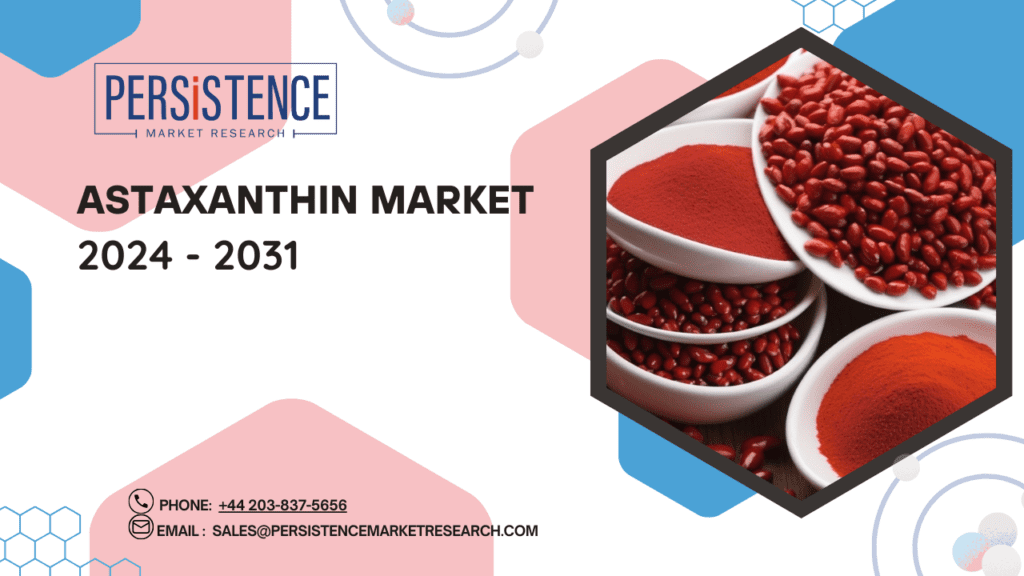
Astaxanthin is a powerful antioxidant that has garnered significant attention in the world of nutrition and health due to its remarkable ability to neutralize free radicals and reduce inflammation. Often referred to as the “king of carotenoids,” astaxanthin offers a range of benefits, from protecting the skin against aging to supporting cardiovascular health and boosting the immune system. While astaxanthin is commonly available in supplement form, there are natural food sources rich in this nutrient. In this article, we’ll explore the top foods high in astaxanthin and how they can benefit your overall health.
For More Industry Insight: https://www.persistencemarketresearch.com/market-research/astaxanthin-market.asp
What is Astaxanthin?
Astaxanthin is a carotenoid pigment that gives certain marine animals their pink or reddish hue. It is produced naturally by microalgae (Haematococcus pluvialis) as a defense mechanism against environmental stressors like UV radiation. When marine animals like shrimp, krill, and salmon consume these algae, they accumulate astaxanthin in their tissues, resulting in their characteristic color.
Unlike other carotenoids such as beta-carotene, astaxanthin has unique antioxidant properties. It is 6,000 times more potent than vitamin C, 100 times more effective than vitamin E, and much stronger than beta-carotene in neutralizing free radicals. Its powerful antioxidant activity makes it a sought-after nutrient for promoting skin health, reducing inflammation, and supporting eye and heart health.
Foods Naturally Rich in Astaxanthin
Astaxanthin is predominantly found in marine sources, specifically in seafood and algae. Here are the top foods naturally rich in astaxanthin:
1. Wild-Caught Salmon
Wild-caught salmon is one of the best natural sources of astaxanthin. The vibrant pink color of salmon is directly attributed to the high levels of astaxanthin they acquire from consuming astaxanthin-rich microalgae and plankton. Wild-caught varieties, such as sockeye salmon, have significantly higher astaxanthin content than farmed salmon due to their natural diet.
In addition to astaxanthin, salmon is an excellent source of omega-3 fatty acids, which provide anti-inflammatory benefits and support heart and brain health. Regular consumption of wild-caught salmon can help protect the skin from UV damage, improve cardiovascular health, and boost overall immune function.
2. Krill
Krill, small shrimp-like crustaceans, are another potent source of astaxanthin. Krill consume large amounts of astaxanthin-producing microalgae, which is why they are highly concentrated in this antioxidant. Krill oil supplements are popular due to their astaxanthin content as well as their rich concentration of omega-3 fatty acids.
Krill oil has been shown to support heart health, reduce inflammation, and improve joint function. Unlike some other seafood sources, krill is low on the food chain and thus less likely to contain contaminants like mercury or other heavy metals, making it a safe and effective source of astaxanthin.
3. Trout
Similar to salmon, trout is a freshwater fish that contains high levels of astaxanthin. Rainbow trout, in particular, is known for its pinkish flesh, which is a direct result of its astaxanthin content. Consuming trout can provide a good dose of this powerful antioxidant along with omega-3 fatty acids, which promote cardiovascular health, reduce inflammation, and support brain function.
Trout is also a lean source of protein, making it a healthy addition to any diet. By incorporating trout into your meals, you can enjoy the benefits of astaxanthin while supporting your body’s overall well-being.
4. Shrimp
Shrimp, especially wild-caught varieties, are rich in astaxanthin due to their consumption of astaxanthin-producing algae and plankton. The reddish-pink color of shrimp after cooking is an indication of its astaxanthin content. Like other seafood rich in astaxanthin, shrimp can help protect against oxidative stress, support skin health, and reduce the risk of cardiovascular diseases.
In addition to astaxanthin, shrimp provides a good source of lean protein, selenium, and iodine, essential nutrients for thyroid function and overall health.
5. Lobster and Crab
Lobster and crab, particularly the red and pink varieties, are also good sources of astaxanthin. The deep red color of cooked lobster and crab is a result of the breakdown of astaxanthin during the cooking process. These shellfish are not only rich in astaxanthin but also provide important nutrients like zinc, copper, and selenium, which play a role in immune function and antioxidant defense.
Including lobster and crab in your diet can boost your intake of astaxanthin while offering a variety of essential vitamins and minerals.
6. Red or Pink Fish Roe
Fish roe, especially from salmon, trout, and other fish with pink or red flesh, is another excellent source of astaxanthin. These tiny eggs are packed with nutrients, including omega-3 fatty acids, vitamin D, and astaxanthin. Fish roe is commonly used in sushi and other dishes and provides a concentrated source of this powerful antioxidant.
In addition to astaxanthin, fish roe offers numerous health benefits, including promoting brain health, improving skin elasticity, and supporting heart health due to its high omega-3 content.
Health Benefits of Astaxanthin
Now that you know which foods are rich in astaxanthin, let’s explore the health benefits of incorporating this powerful antioxidant into your diet:
- Skin Health: Astaxanthin helps protect the skin from UV damage, reducing wrinkles and improving skin elasticity. It acts as an internal sunscreen, providing protection against photoaging and promoting a youthful complexion.
- Eye Health: Astaxanthin’s ability to cross the blood-retina barrier makes it highly effective in protecting the eyes from oxidative damage. It helps reduce the risk of age-related macular degeneration (AMD) and other eye-related conditions.
- Cardiovascular Support: Astaxanthin’s anti-inflammatory properties help improve blood flow and reduce oxidative stress in the arteries, promoting overall heart health.
- Joint Health: Astaxanthin is known for reducing inflammation in joints, making it beneficial for individuals with arthritis or joint pain.
